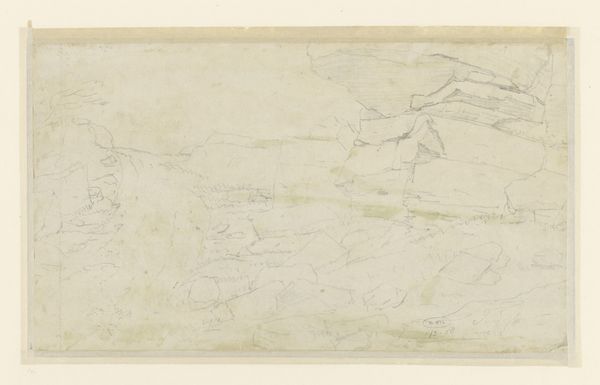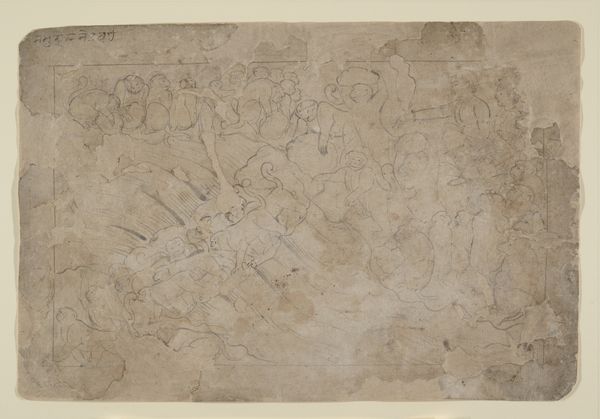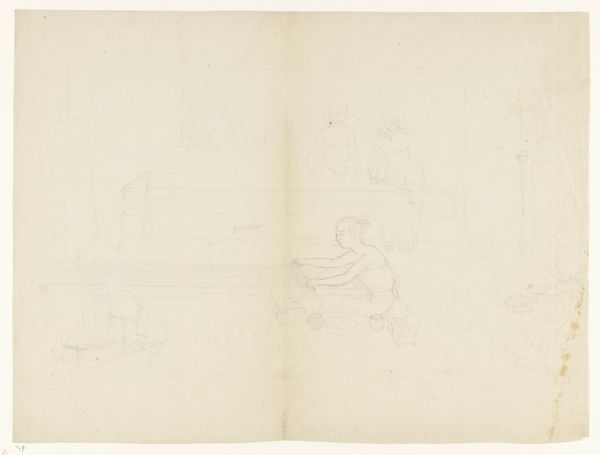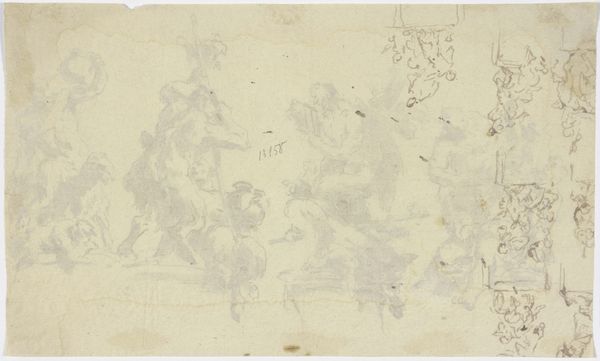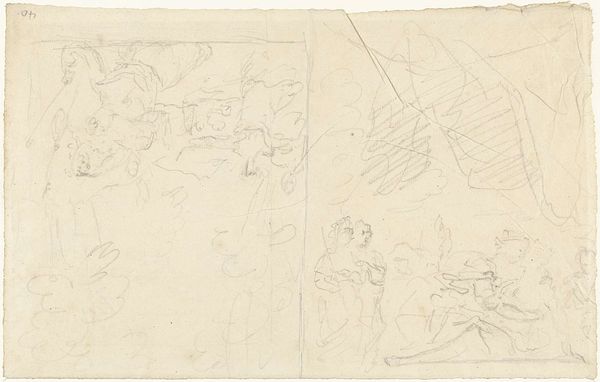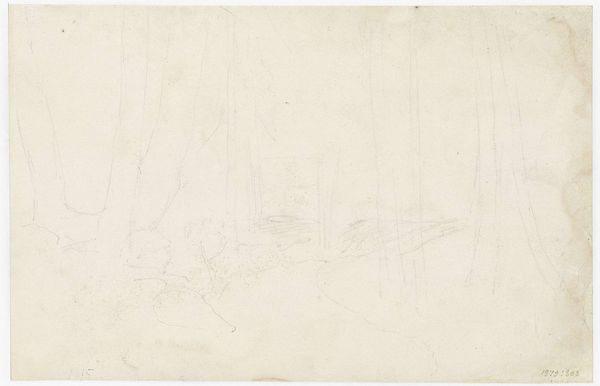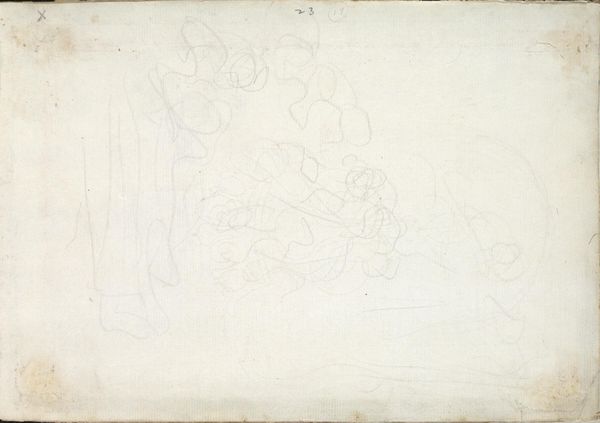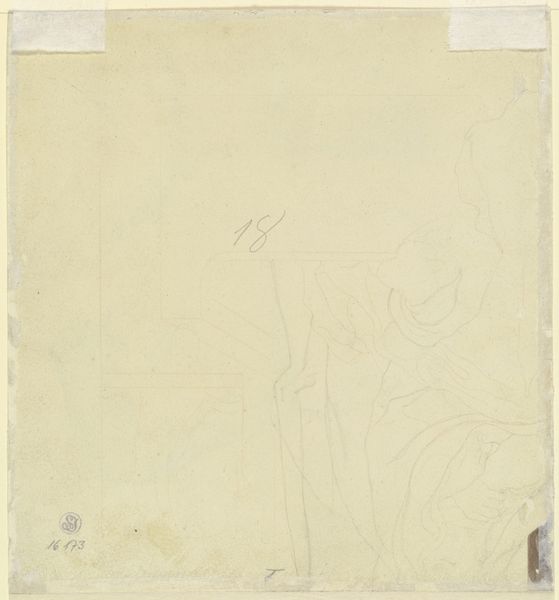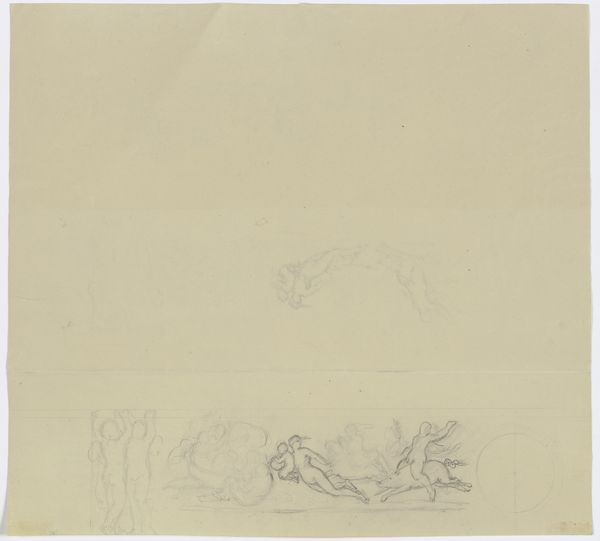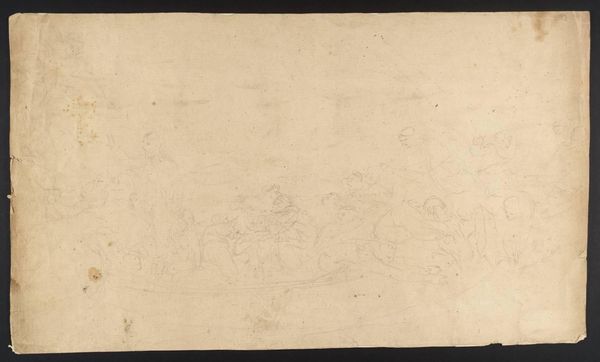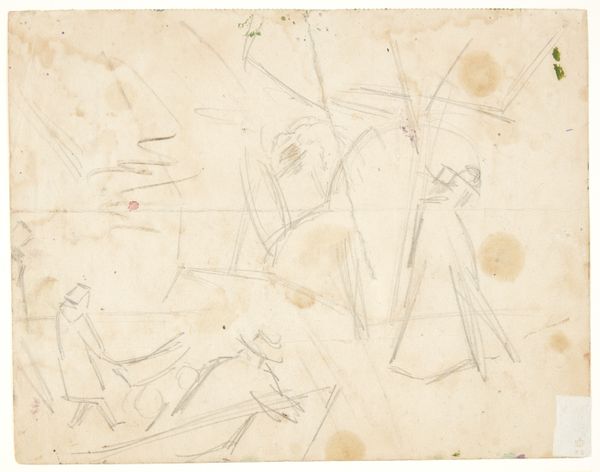
drawing, paper, pencil
#
drawing
#
water colours
#
narrative-art
#
figuration
#
paper
#
pencil
#
genre-painting
Dimensions: height 220 mm, width 340 mm
Copyright: Rijks Museum: Open Domain
Curator: Here we have "Schetsblad," a sketch sheet crafted between 1770 and 1787 by Jan Brandes. It combines pencil and watercolor on paper. My immediate impression is of a bustling, but ethereal domestic scene. It feels like peering into someone's memory. Editor: That lightness is interesting, almost fleeting. These aren't polished figures. Brandes appears to capture something spontaneous about interactions within a home, hinting at the role of women. Are we meant to consider their interiority? Curator: Precisely! Look at how Brandes positions these women. They’re not centered or monumental. There's one near a table who seems occupied with writing, and the whole setting becomes indicative of intellectual pursuits and artistic engagement. Were women gaining opportunities for intellectual activity, challenging traditional gender norms? Editor: Symbols and images become crucial then. I'm thinking particularly of the architecture—the doorways and the vague figures that exist at their edge. What does the repetition of archways tell us about entrances and passages, physically and metaphorically, for women? The act of writing, too, transforms women to be active participants, not passive vessels. Curator: And the narrative implications! There's such a delicate balance, a dance, between domesticity and artistic endeavor here. Consider also the limitations, both real and perceived, imposed upon women during this period, particularly regarding accessing those traditionally masculine realms of intellectual production and the public sphere. Editor: And it's that fragility that I find striking. As sketches, these are images of works in progress; their pale impression evokes feelings and stories as something transient, an interrupted moment of living as captured from a distance. The pencil drawings lack a solid finish, giving more weight to suggestion and possible interpretations. Curator: Thank you, it's helpful to see the cultural values through those unfinished touches, particularly regarding class and domesticity during this era. This sheet makes us reflect on not only representation but the actual roles inhabited, resisted, and imagined. Editor: Ultimately, this sketch evokes questions more than delivering answers. Its fragmented essence lends it the air of mystery, an incomplete thought, which in the end might invite even deeper contemplation.
Comments
No comments
Be the first to comment and join the conversation on the ultimate creative platform.

